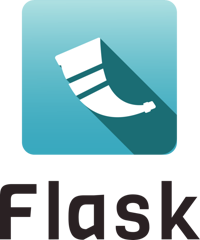Working with the Shell¶
Changelog
New in version 0.3.
One of the reasons everybody loves Python is the interactive shell. It basically allows you to execute Python commands in real time and immediately get results back. Flask itself does not come with an interactive shell, because it does not require any specific setup upfront, just import your application and start playing around.
There are however some handy helpers to make playing around in the shell a
more pleasant experience. The main issue with interactive console
sessions is that you’re not triggering a request like a browser does which
means that g, request and others are not
available. But the code you want to test might depend on them, so what
can you do?
This is where some helper functions come in handy. Keep in mind however that these functions are not only there for interactive shell usage, but also for unit testing and other situations that require a faked request context.
Generally it’s recommended that you read The Request Context first.
Command Line Interface¶
Starting with Flask 0.11 the recommended way to work with the shell is the
flask shell command which does a lot of this automatically for you.
For instance the shell is automatically initialized with a loaded
application context.
For more information see Command Line Interface.
Creating a Request Context¶
The easiest way to create a proper request context from the shell is by
using the test_request_context method which creates
us a RequestContext:
>>> ctx = app.test_request_context()
Normally you would use the with statement to make this request object
active, but in the shell it’s easier to use the
push() and
pop() methods by hand:
>>> ctx.push()
From that point onwards you can work with the request object until you
call pop:
>>> ctx.pop()
Firing Before/After Request¶
By just creating a request context, you still don’t have run the code that
is normally run before a request. This might result in your database
being unavailable if you are connecting to the database in a
before-request callback or the current user not being stored on the
g object etc.
This however can easily be done yourself. Just call
preprocess_request():
>>> ctx = app.test_request_context()
>>> ctx.push()
>>> app.preprocess_request()
Keep in mind that the preprocess_request() function
might return a response object, in that case just ignore it.
To shutdown a request, you need to trick a bit before the after request
functions (triggered by process_response()) operate on
a response object:
>>> app.process_response(app.response_class())
<Response 0 bytes [200 OK]>
>>> ctx.pop()
The functions registered as teardown_request() are
automatically called when the context is popped. So this is the perfect
place to automatically tear down resources that were needed by the request
context (such as database connections).
Further Improving the Shell Experience¶
If you like the idea of experimenting in a shell, create yourself a module with stuff you want to star import into your interactive session. There you could also define some more helper methods for common things such as initializing the database, dropping tables etc.
Just put them into a module (like shelltools) and import from there:
>>> from shelltools import *
